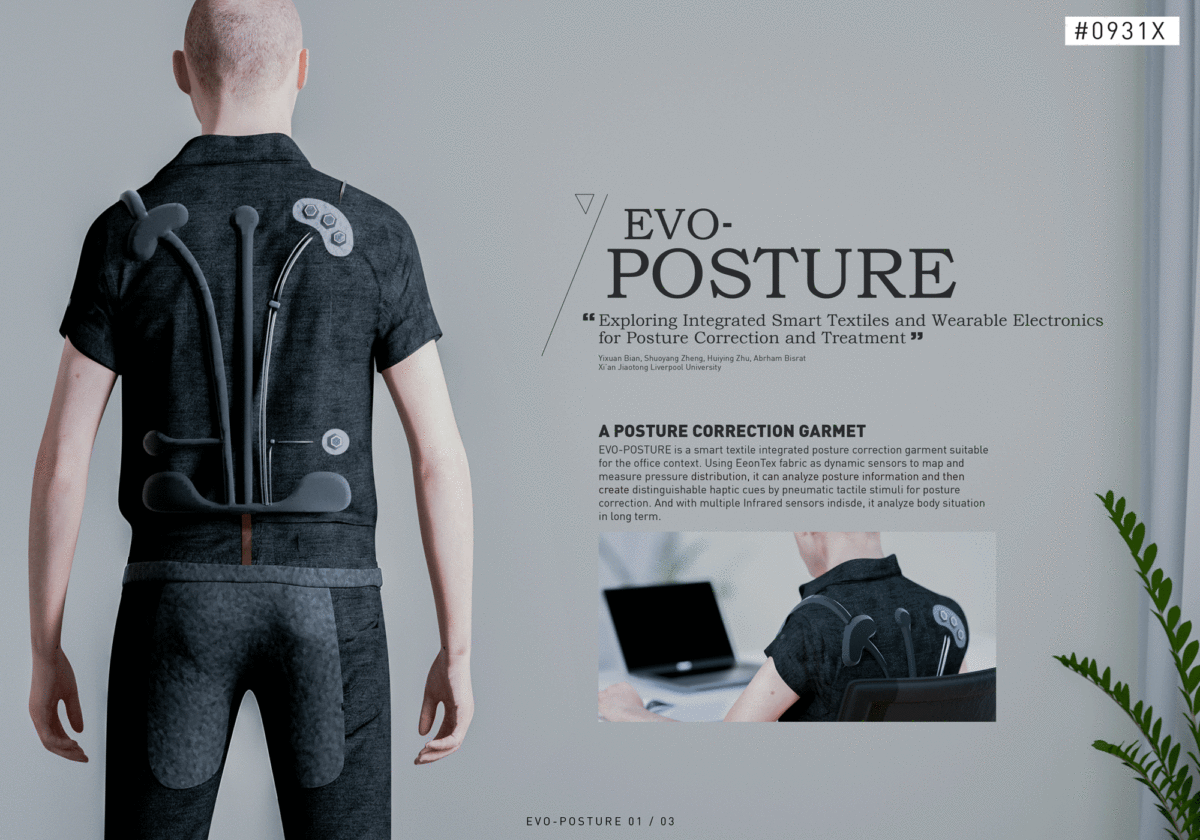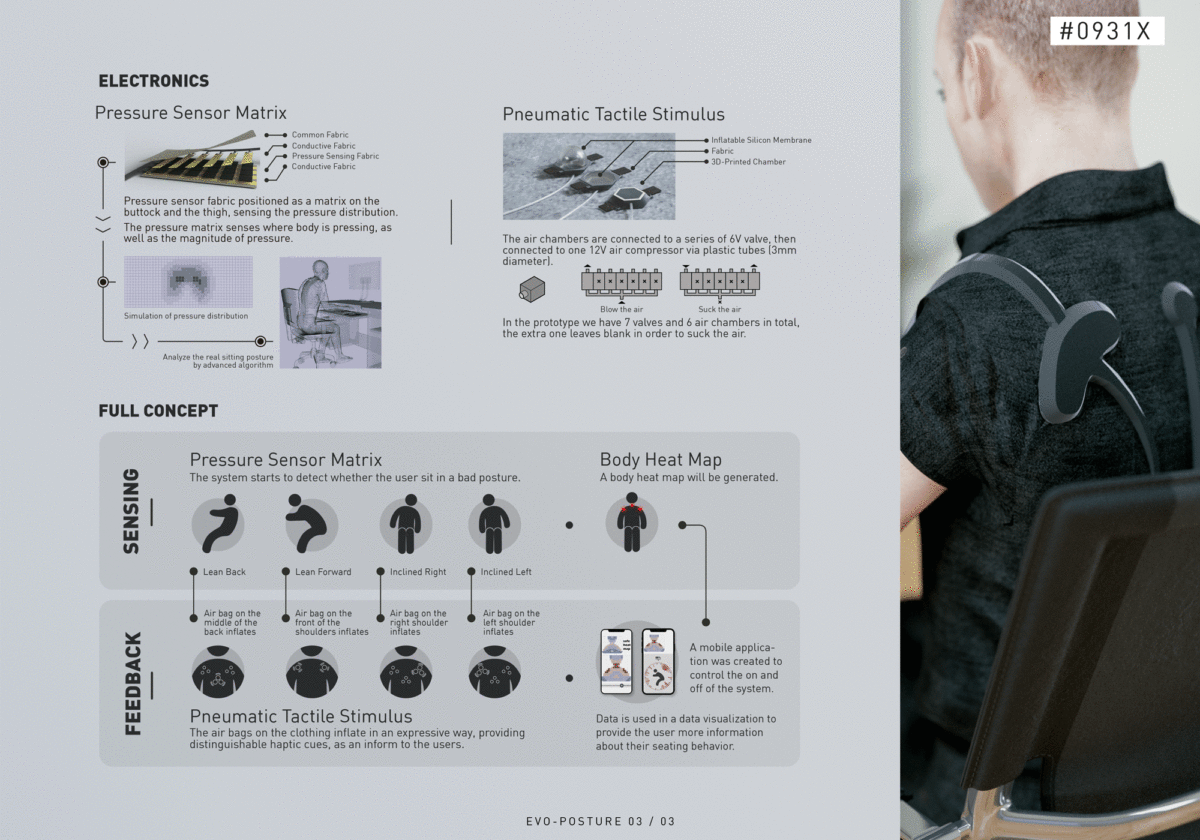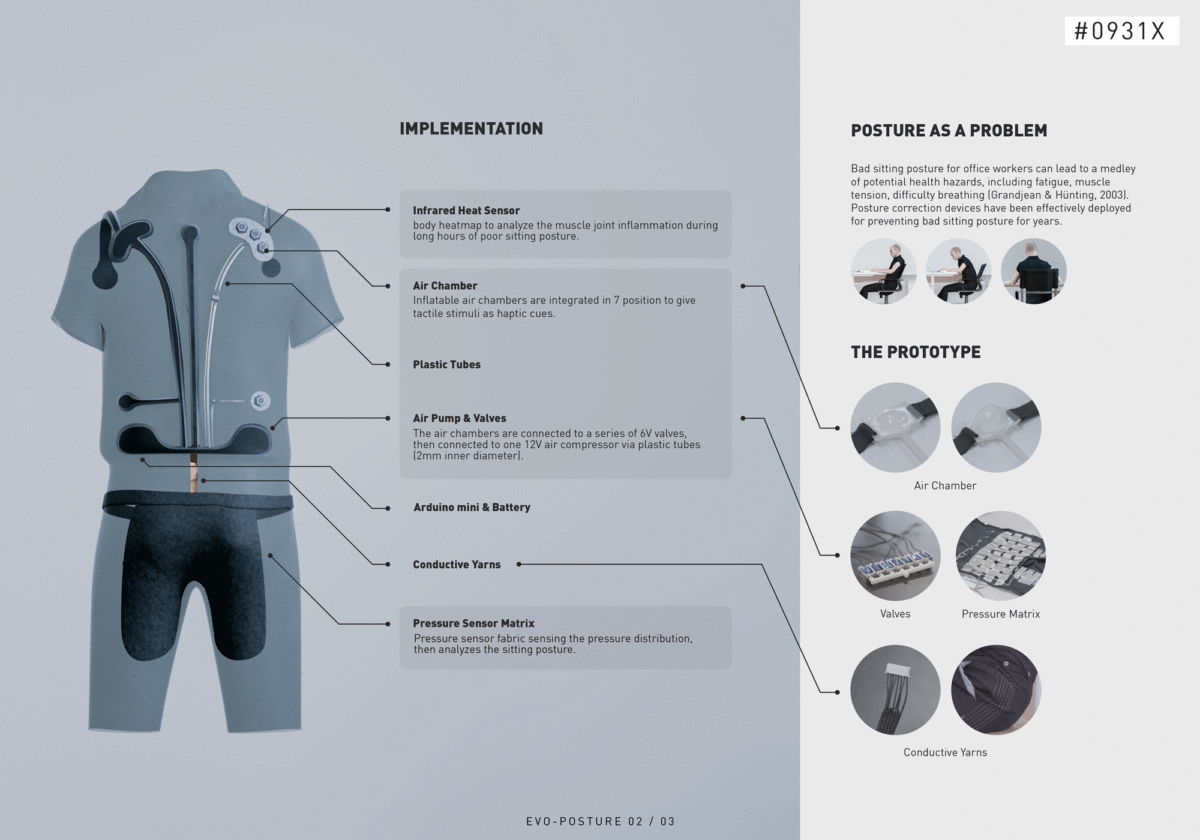RESHAPE18 | sensing materialities
Product design category
Evo posture
Designers: Yixuan Bian – Shuoyang Zheng – Huiying Zhu- Abrham Bisrat

EVO-POSTURE is a smart textile integrated posture correction garment suitable for the office context. Using EeonTex fabric as dynamic sensors to map and measure pressure distribution, it can analyze posture information and then create distinguishable haptic cues by pneumatic tactile stimuli for posture correction. And with multiple Infrared sensors inside, it analyzes body situation in long term.
Bad sitting posture for office workers can lead to a medley of potential health hazards, including fatigue, muscle tension, difficulty breathing (Grandjean & Hünting, 2003). Posture correction devices have been effectively deployed for preventing bad sitting posture for years.
Posture correction technology involves two parts: sensing and feedback. Common approaches in sensing the posture includes using accelerometer, skeletal tracking technology (Alejandro, 2005) or thermoplastic elastomer strain sensor (Corinne et al, 2007) to detect the posture. Common feedback approaches include vibration and visual signal to inform the users, or use external force provided by elastic textile to correct the posture compulsively.
While these approaches can provide acceptable sensing result and explicit feedback, they require an extra device to be put on the body. And according to the previous research on vibration feedback, it might trigger negative responses (Kaaresoja & Linjama, 2005)
In our research, we explored different sensing and feedback alternatives to prevent and provide treatment for pain caused by bad sitting posture. Consequently, we integrated selected sensing and feedback mechanisms into a smart garment suitable for the office context.

Pressure Sensor Matrix
EeonTex fabric is a conductive, nonwoven microfiber with piezo-resistive functionality foruse in dynamic sensors to map and measure pressure, bend, stretch and torsion.
Pneumatic Tactile Stimulus
Very few experiences can be conveyed by vibration alone. However, previous research has introduced a more expressive technology, that is the force feedback (Alexandra et al. 2018).
Pneumatically-actuated interface has been proven to be able to create distinguishable haptic cues (Liang et al. 2015). We tried to use these cues to provide information to the users.
After the individual testing of each sensing and feedback alternative, we have made improvements to the sitting posture detection and air chamber for tactile stimuli. We redesigned the position of the airbag to follow the design that is shown in the final concept.
In this project, we successfully convey pressure distribution to posture information, and create distinguishable haptic cues by pneumatic tactile stimuli for posture correction.
In the future study, physiological and ergonomic studies should be considered to
successfully provide more precise posture guidance for the users.


